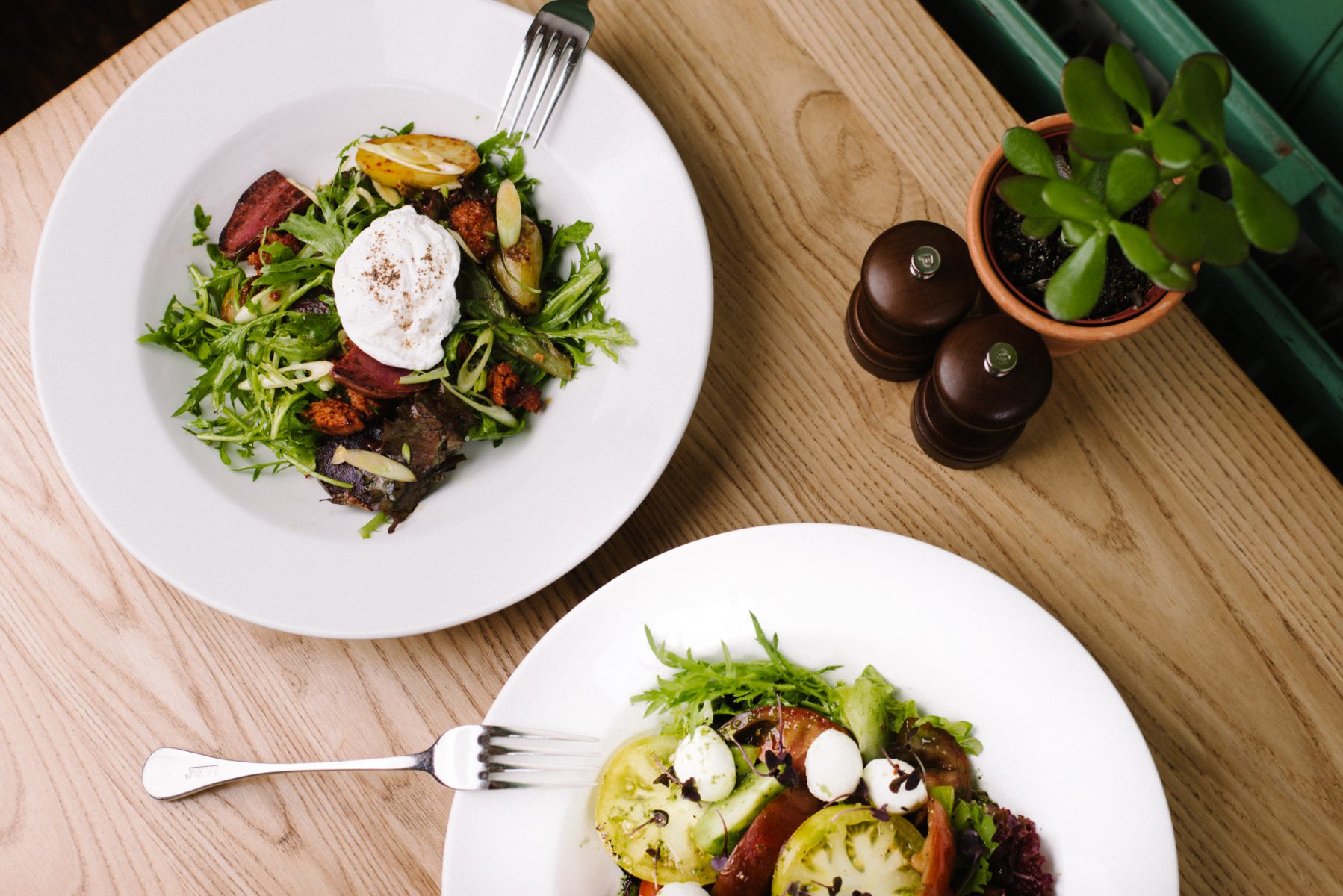July 10, 2019
5 Ways to Make the Most out of your Weekly Shop
How to minimise wastage and put the contents of your fridge to good use!


We’re all getting more aware of minimising our plastic usage, and recession after recession means we don’t want to be wasting anything we’ve spent our valuable pounds on anyway. But you buy new ingredients for a specific recipe, and find that they’re still the fridge a week later, looking sorry for themselves. What can you do?
Get creative, that’s what! Below we’ve written up our 5 top tips to help you make the most out of your weekly shop – and don’t worry, they don’t require you to be a chef in the kitchen. Read on.
 Arts
Arts
Yeah we’re pushing Leeds Kirkgate market too, because you can pretty much get everything you need from there!
-
Give your Ingredients a Second Life
Choose ingredients which will give you more than one meal
Give your meals a second and third incarnation! Sound gross or Holy? Both? It’s not. If you’re canny with your choices, you can make one ingredient work for several different meals.
For example – chicken. Instead of buying chicken breasts, spend twice as much and buy the whole bird (go organic if you can, but definitely free range). You’ll save money in the end, as you get at least 4 meals, as opposed to one.
Meal 1: Roast Chicken
Roast the chicken whole (or joint it, if you prefer) and eat one meal’s worth, as you would’ve eaten the chicken breasts.
If you’re having onions, carrots, celery, fennel or other veg with the meal (except maybe brassicas like cabbage and broccoli, which don’t taste good slow-cooked) keep aside the bits you’d usually chuck (the onion skins, the stalks and ends of the carrots, celery and other veg – all of it).
Strip the rest of the meat off your cooked chicken and put it in a tupperware in the fridge. Put the bird’s carcass in a big pot, with those leftover bits of veg. It should amount to at least 1 onion (or ½ leek), 1 carrot, 1 stick of celery and any other odds and ends, to one small chicken carcass. A bay leaf or two is always welcome, and you can always chuck in herbs, like some parsley. Experiment with anything and everything. Add about 6 black peppercorns if you’ve got them. Then cover all this with water and simmer it for at least 2 hours, but as long as possible.
Strain that precious homemade stock into tupperwares and freeze if you won’t use in the next 4 or 5 days. Chuck the used carcass and veg away (have you got a compost bin? If you have a garden, a compost bin means you won’t have to buy compost – another way to maximise your shop! This bokashi bin composts everything (including meat and bones).
Meal 2: Sandwiches / Salad
Use some of the chicken you stripped from the bird as a tasty homemade sandwich filling (just add mayo and lettuce, or add bacon, lettuce and tomato for a CBLT!), or on top of a salad. No guarantees it’ll look as good as this geezer from our client Arts.
Meal 3: Quick Cook Dinner
Use up the rest of the stripped chicken in a quick-cook thai curry, stir fry, stew or casserole – because it’s already cooked, just stir the meat through 5 minutes or so before the end so the it can get warm.
Meal 4: Risotto or Soup
This meal is about maximising the stock – and it’s likely that this alone would feed at least 6 people. Homemade stock is so much nicer, and healthier too, than shop-bought – plus it’s basically free, as a second usage of the ingredients you already bought.
A simple risotto like garden pea with a scratched grating of lemon and parmesan on top, or roasted butternut squash with pancetta, requires little more than your stock, some risotto rice and 1-2 more ingredients. You can even make the most comforting, simple risotto with just stock, rice and parmesan. FYI risotto is a great way to use up any ends of white wine too! Just splash in after you’ve stirred the rice through your sweated onions.
As for soup – all you need for most soups is an onion, stock and your flavour choice (for example, carrot and ginger, carrot and cumin, sweet potato and coconut, leek and potato…).
Making stock works for any meat or fish you’re cooking with a bone in (think whole game birds like pheasant, a whole seabass or a rib of beef). If you’re making fish stock, DON’T BOIL – that gives an over-fishy flavour. Just simmer it gently. Add a little cream, some leek and sweetcorn and you’ve got an amazing fish chowder. You can even get beef bones for free from most butchers, and make stock for the sake of it – so you’ve got beef stock at hand to make soups, stews and ramen!
Other ingredients to give a second life: coffee (dry out those grounds and use in a spice mix as a BBQ rub, or use to exfoliate in the shower). Dig your used grounds into the compost heap. They’re also good for deodorising your fridge! Parmesan rind (chuck the hard bit at the end into a risotto or soup to let it give its umami flavour). Fat (if you cook duck or goose, or fatty beef or pork, pour that fat off at the end of cooking into a sterile jar. Makes amazing fat for cooking roast potatoes or chips in). Egg whites/yolks (never chuck away the spares if your recipe calls for loads of yolks, for example. Egg white keep well in the freezer and make amazing meringue – just remember how many whites you put in there. Keep extra yolks in the fridge and add extra richness to your scrambled eggs by sticking extra yolks in).
 Phoebe Ryan
Phoebe Ryan
-
What to do with: bruised veg
Stocks, stews, casseroles, soups…use up bruised veg in ways you can’t see
When a carrot has gone squidgy at one end, an onion needs a bit chopping off, or a bit of veg has started to go soft, it doesn’t mean you have to bin them. As long as the bruising won’t affect the taste (I wouldn’t shove a fluffy, mouldy carrot into any recipe any time soon) then you can carry on and use them as planned. If the look of the veg is impacted – well, just make something where you finely chop, whizz up or slow cook the veg. Think stews, casseroles and soups.
-
What to do with: bruised fruit
Smoothies, cakes, pancakes, jams…using up bruised fruit is easy.
Bruised fruit is even easier to use up than bruised veg, I think. It’s very easy to ignore than smushy apple or squidgy banana in the fruit bowl, but instead of letting it rot and chucking it away, why not use it. Soft apples make great apple puree (for apple pies or to have with pork) – just finely chop and cook in water, adding sugar to taste. Soft bananas make the best banana bread or banana pancakes. For other soft fruits, smoothies are a great way forward – just slice off the offending smushy bit and put it in the whizzer.
And finally – jam. Almost all fruit is good to jam! You don’t need vast quantities – a punnet of reduced, over-ripe raspberries will make you a small jar of jam! Clean some jam jars, fill with water and put them in a low oven. They’re sterile when the water is bubbling inside. For the jam, merely match fruit weight for sugar weight (eg 500g raspberries, 500g sugar) for a set jam, or use less if, like me, you don’t mind a soft, ‘compote’-style jam. If making jam, boil until the jam bubbles turn viscous and sticky-looking, then do the plate test (put a plate in the fridge and put a blob of jam onto it. If it sets, it’s ready). For compote – just jar when you fancy! It’ll be gorgeous on fresh bread, or drizzled over ice cream, or yoghurt in the morning.
-
Get Freezing
If it looks like you won’t use an ingredient before it goes off, freeze it.
This is particularly pertinent for meats, fish and other proteins, but works for many many foodstuffs, including soft fruits (they will go squidgy but be perfect for recipes like jam, cake, or just to stir through yoghurt) and even cheese (best if you grate it first. It may change the texture a bit, but it’ll be perfect for cooking). All meats, even if you buy a ‘reduced’ steak that says use by today, will be fresh and safe for at least 3 months in the freezer, if you get it straight in. Similarly, if you have leftover pasta, stew or whatever from last night’s dinner, get it in a tupperware and freeze it. Hey presto, home-made ready-meal sat in your freezer for when you’re too busy to cook.
-
Give Ingredients a Lease of Life
Cooking ingredients that you bought raw gives you more time to use them.
For example, a reduced chicken, or steak, with the use by date of today needs to be cooked (or frozen) today – but once cooked, it will be fresh for another 3-4 days in the fridge. This is the case for all meats, fish and poultry.
-
Know the Freezer Rules
You can only freeze raw meat etc once. But once cooked, you can freeze again.
If you let a chicken thaw out, for example, because you think you’ll want to cook it that night, you can’t put it back into the freezer if you change your mind. You can, however, once you’ve cooked it. You can freeze once raw, and once cooked – so why not cook that chicken, strip the meat off, and put a tupperware of freshly cooked chicken back into the freezer for sandwich fillings?
“Phoebe is a member of Chapter 81’s freelance team, and is a passionate foodie. Find a collection of recipes on her blog, the Edible Woman.”Phoebe Ryan


